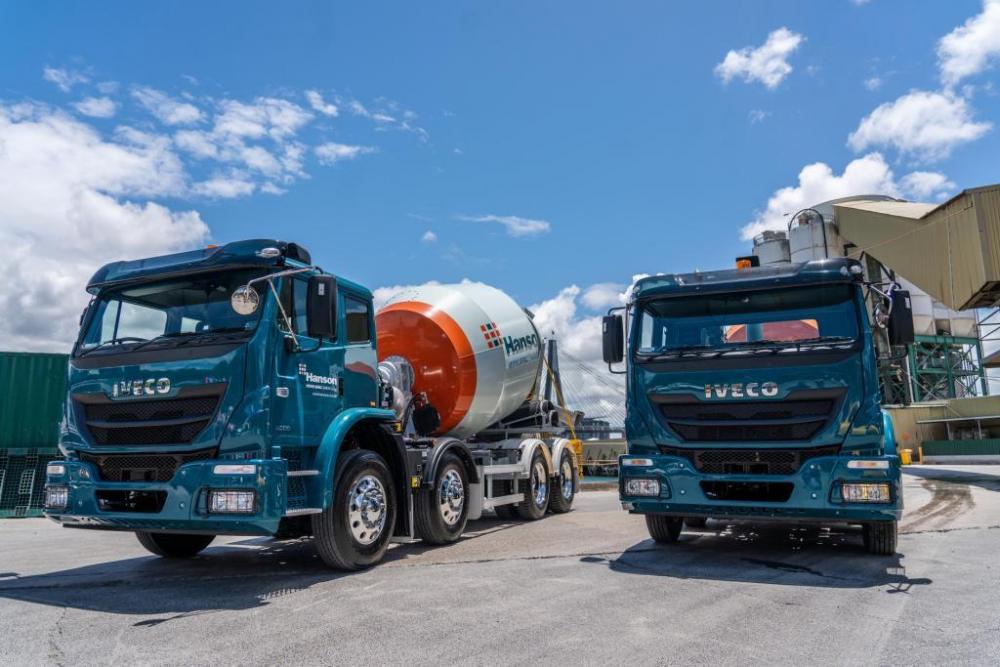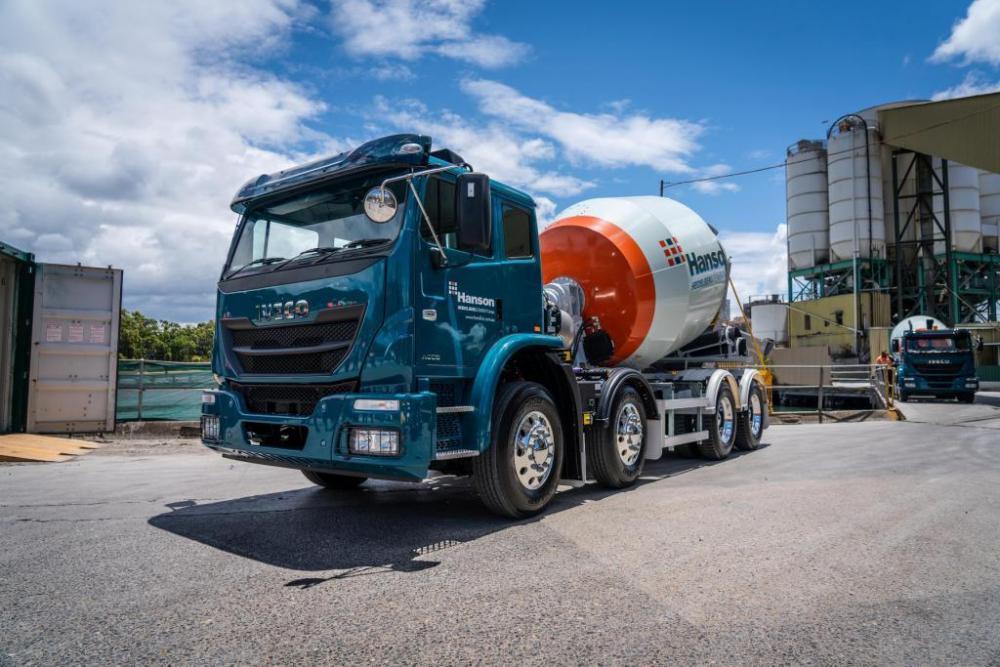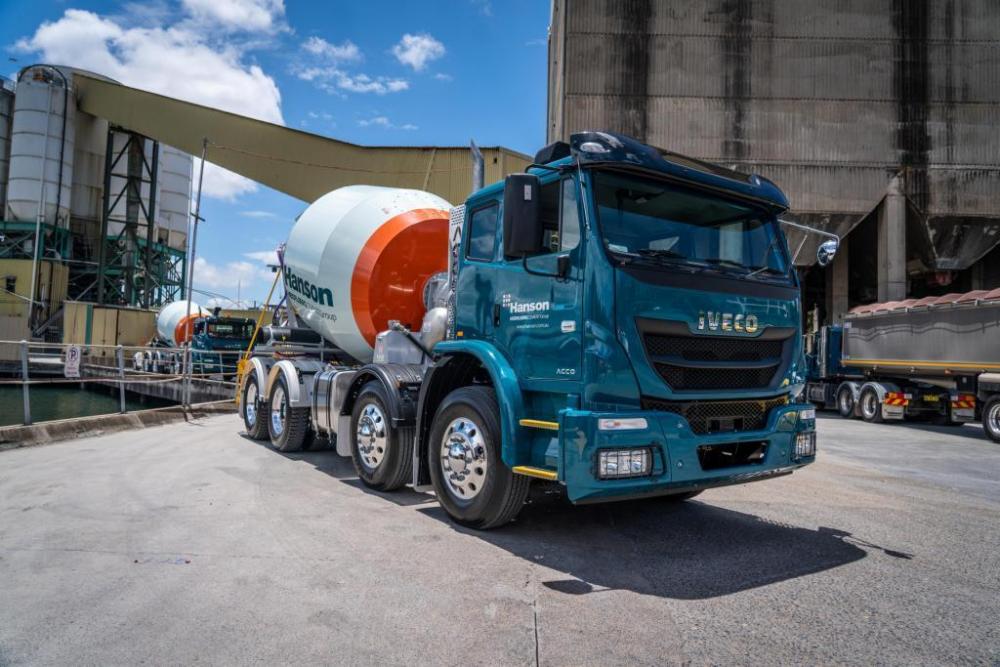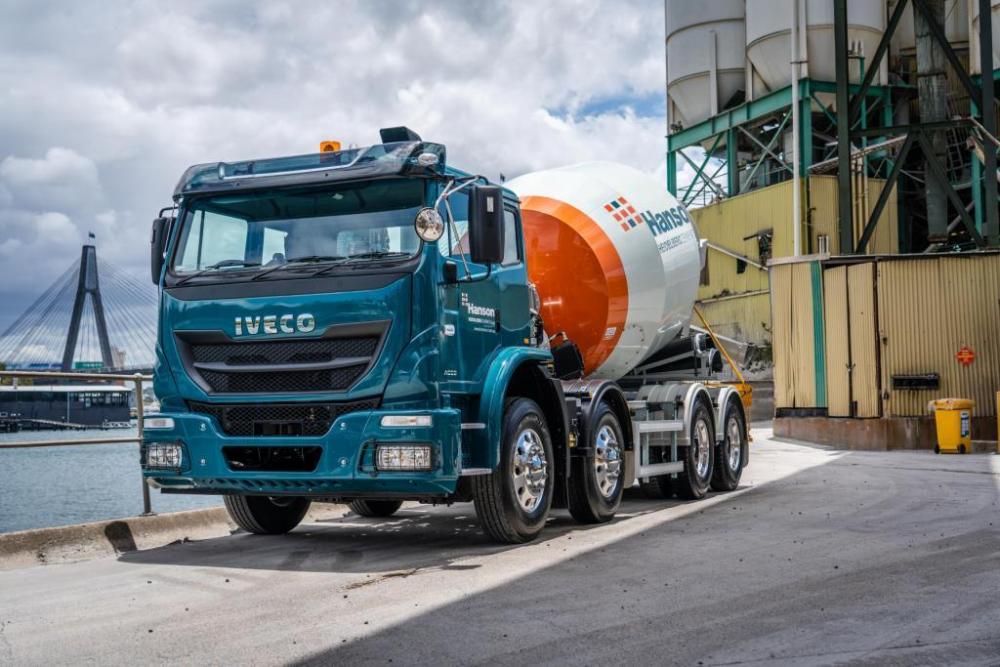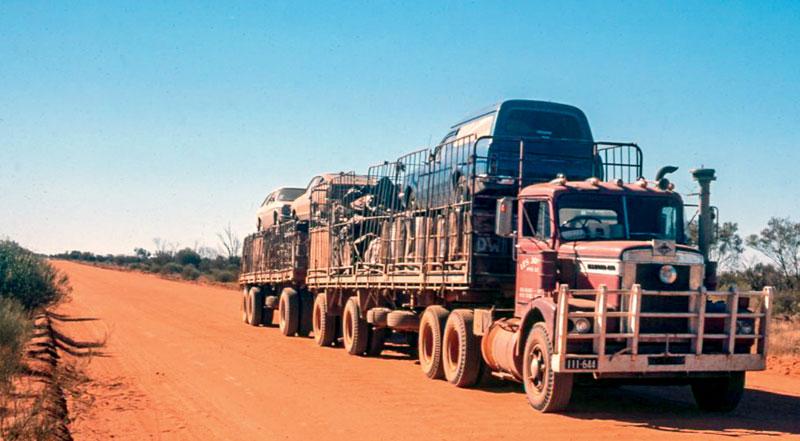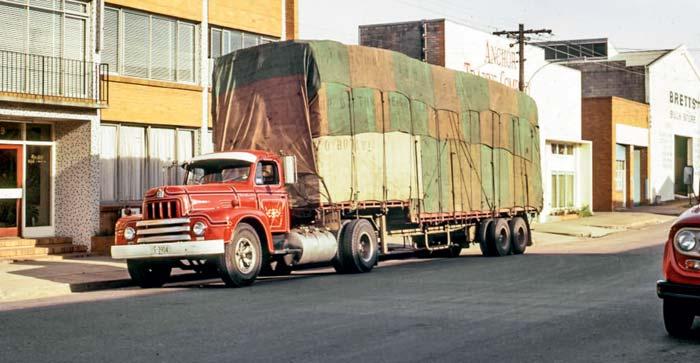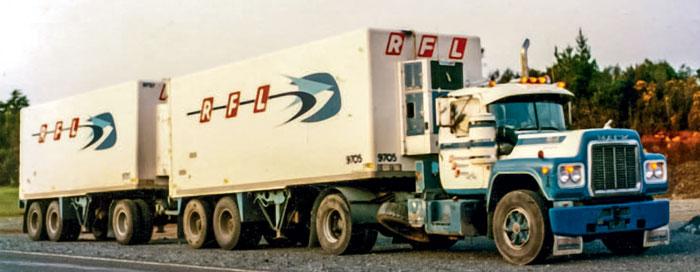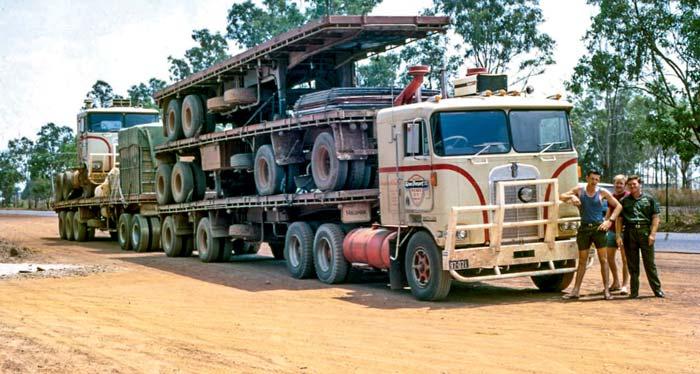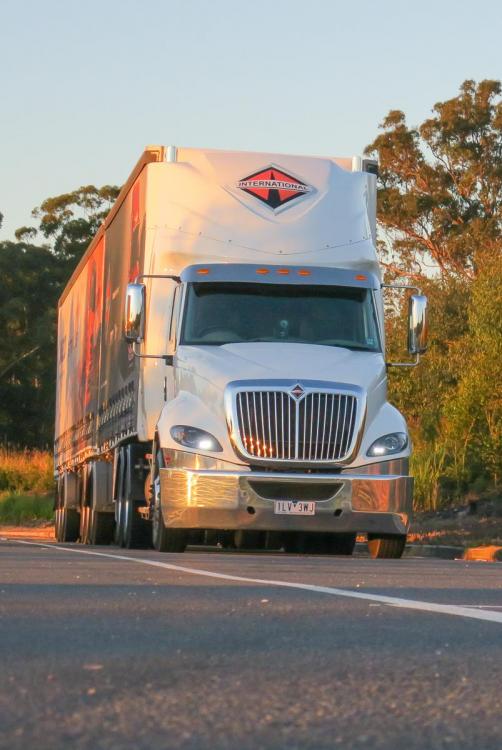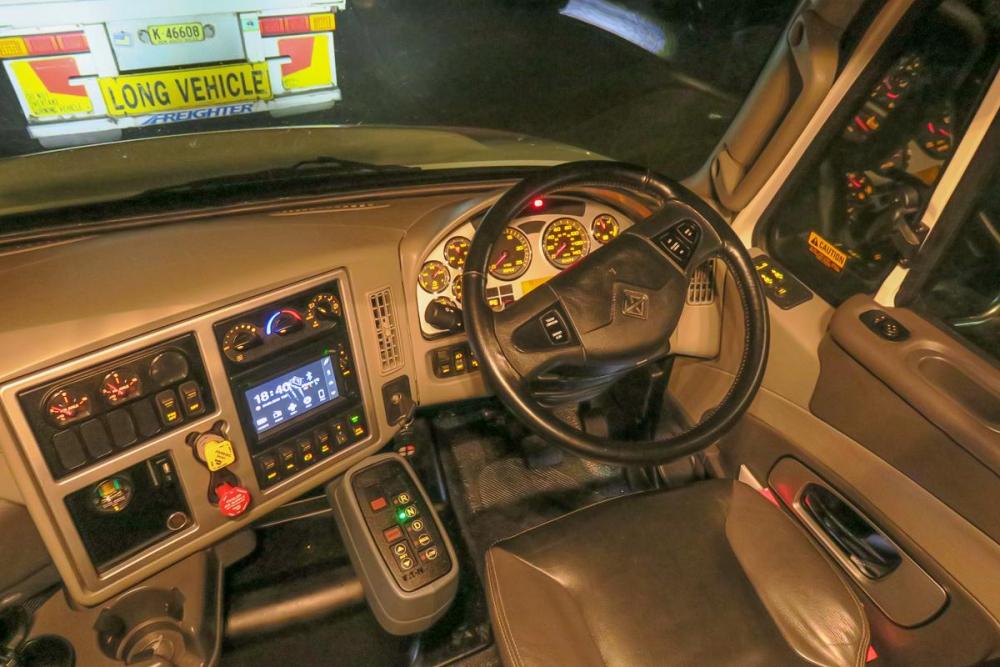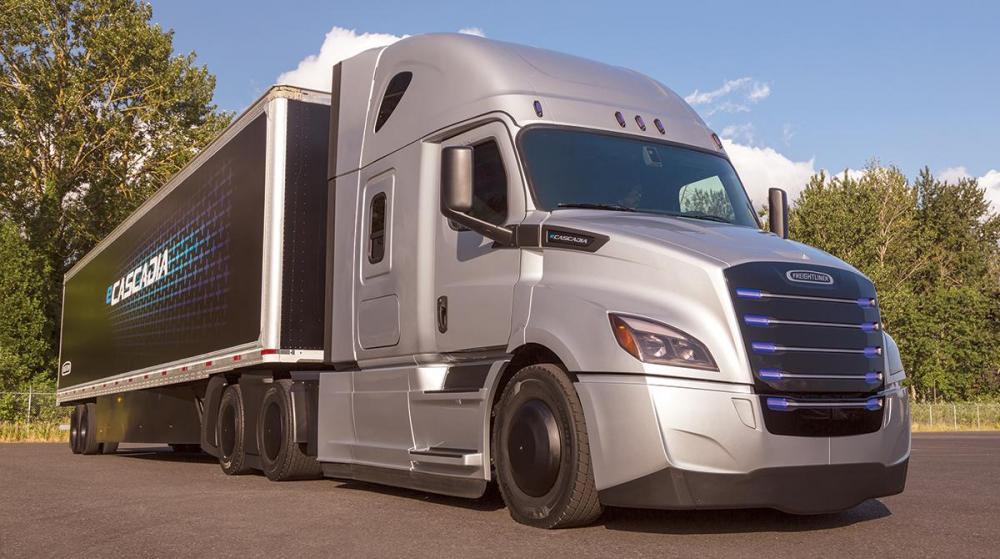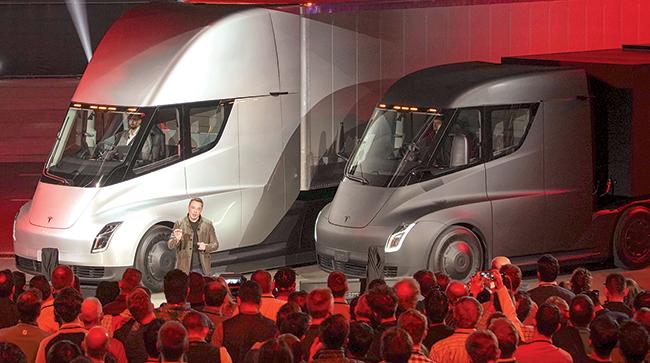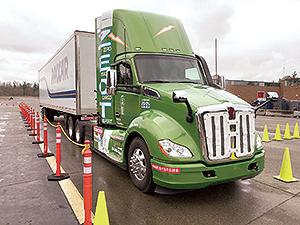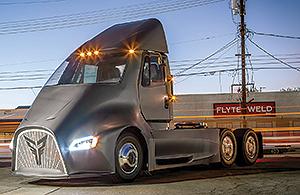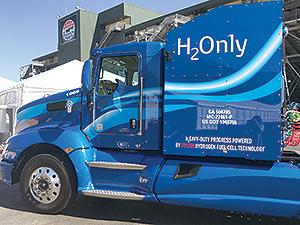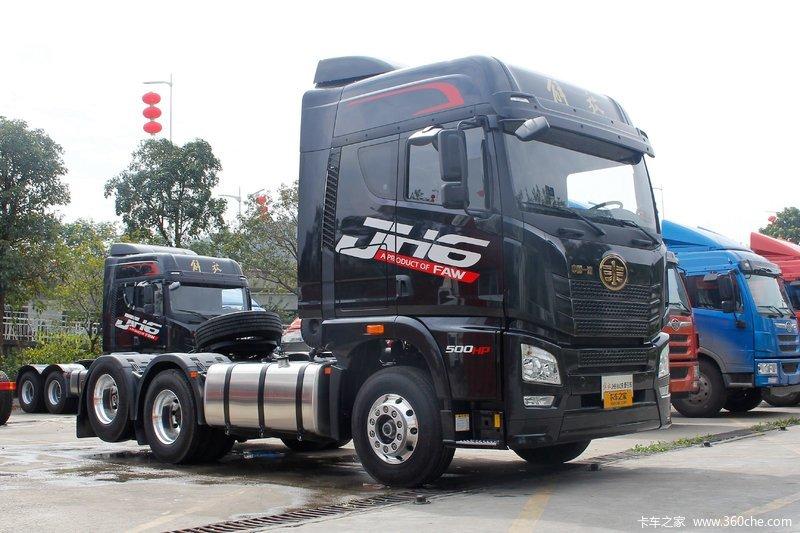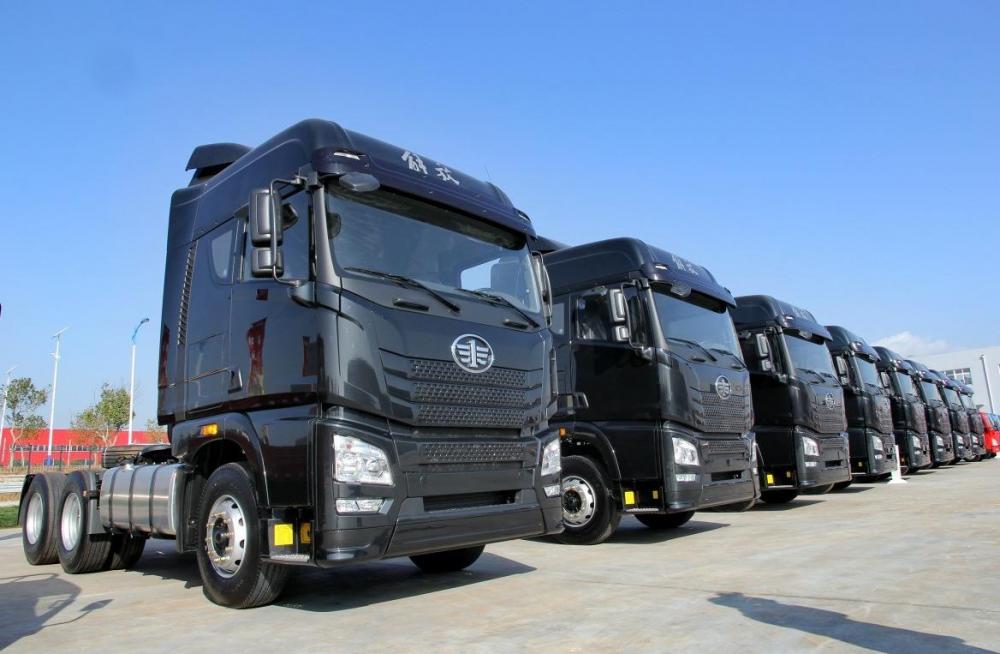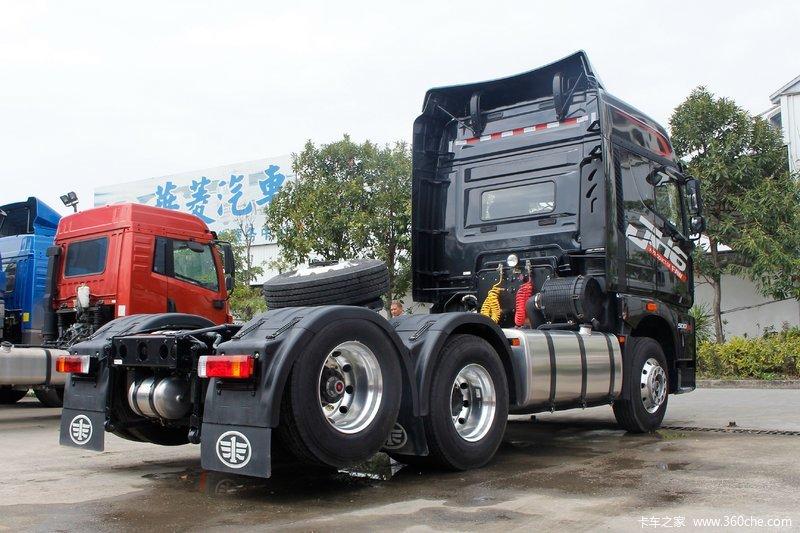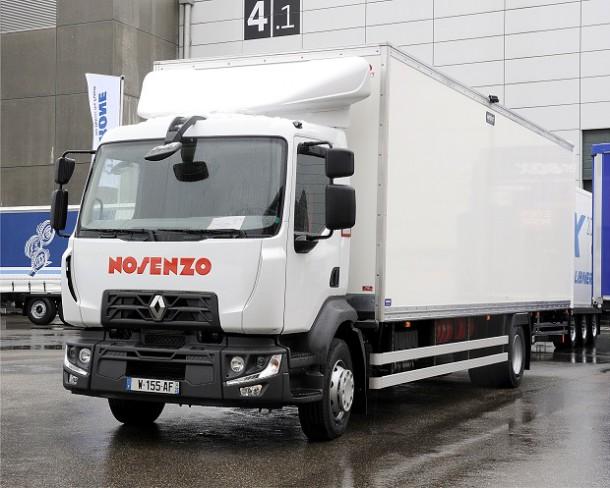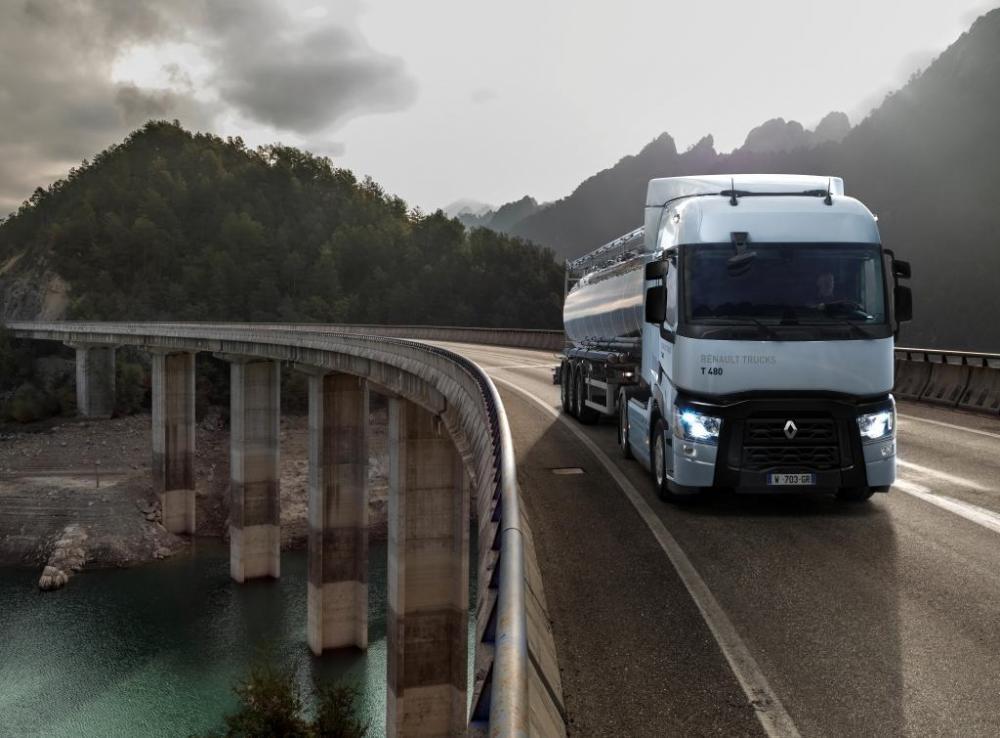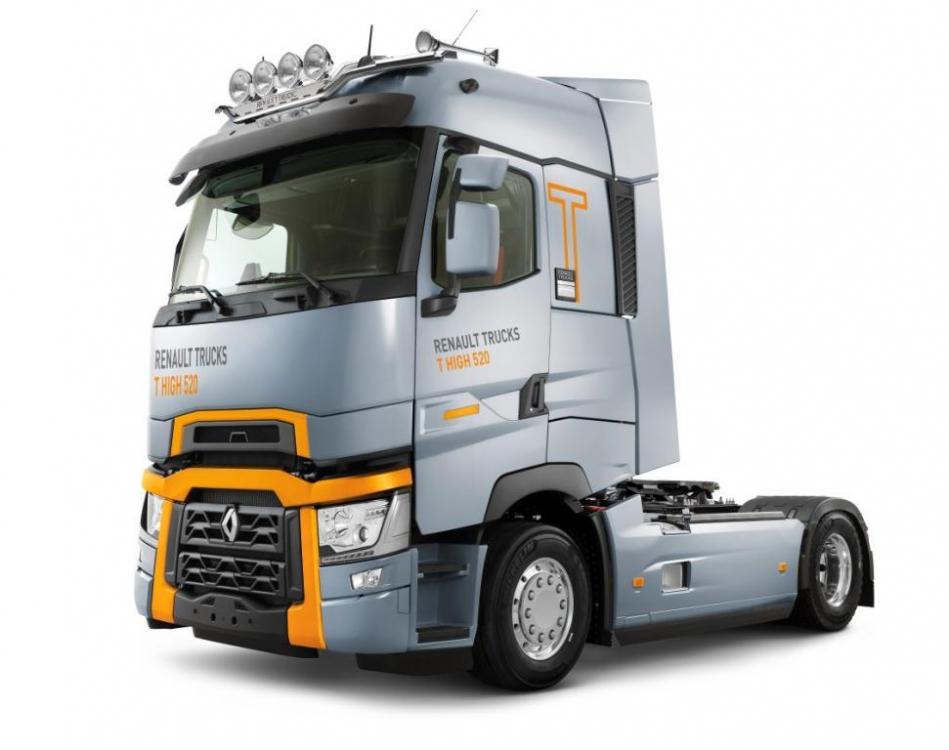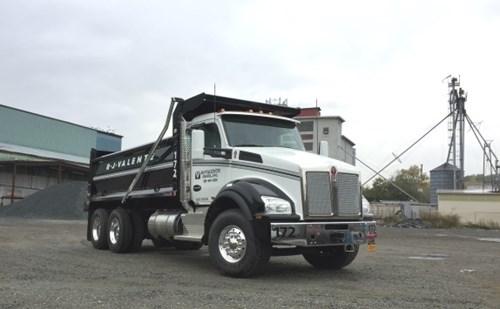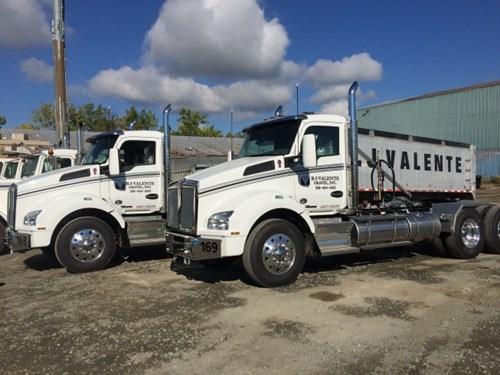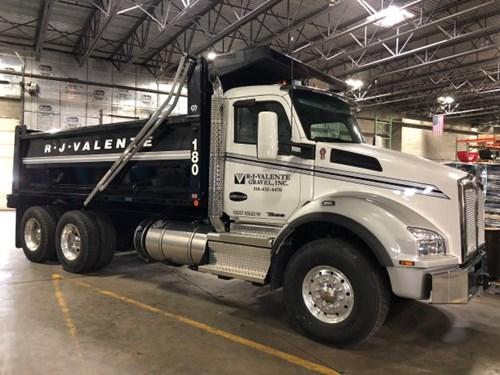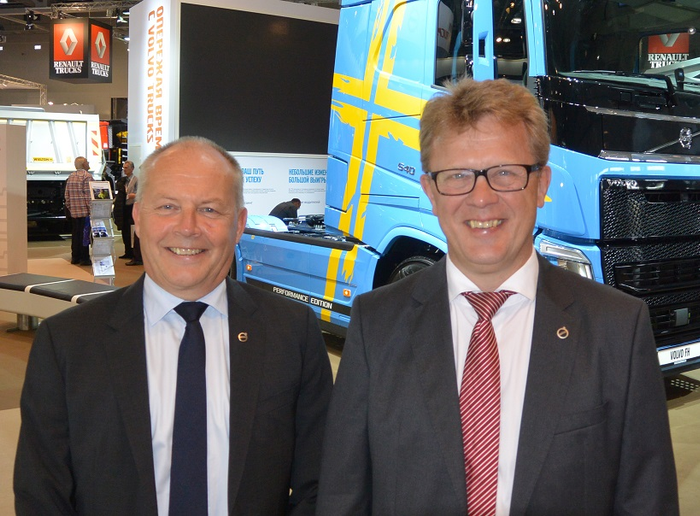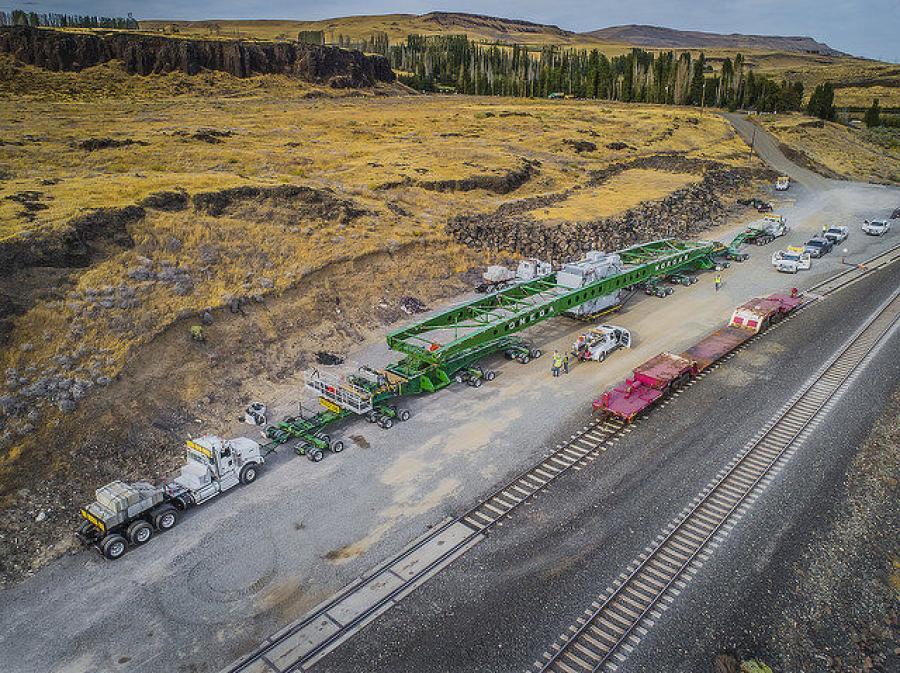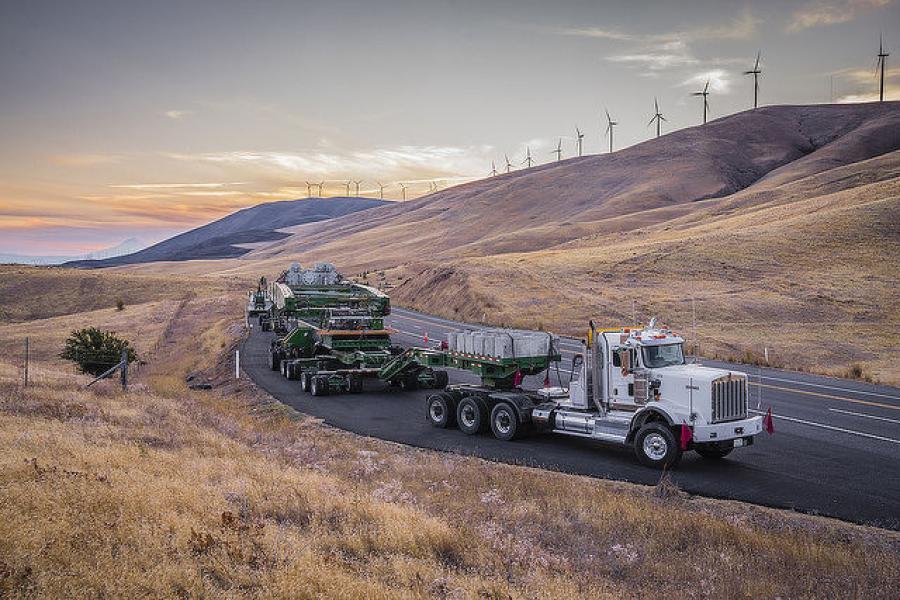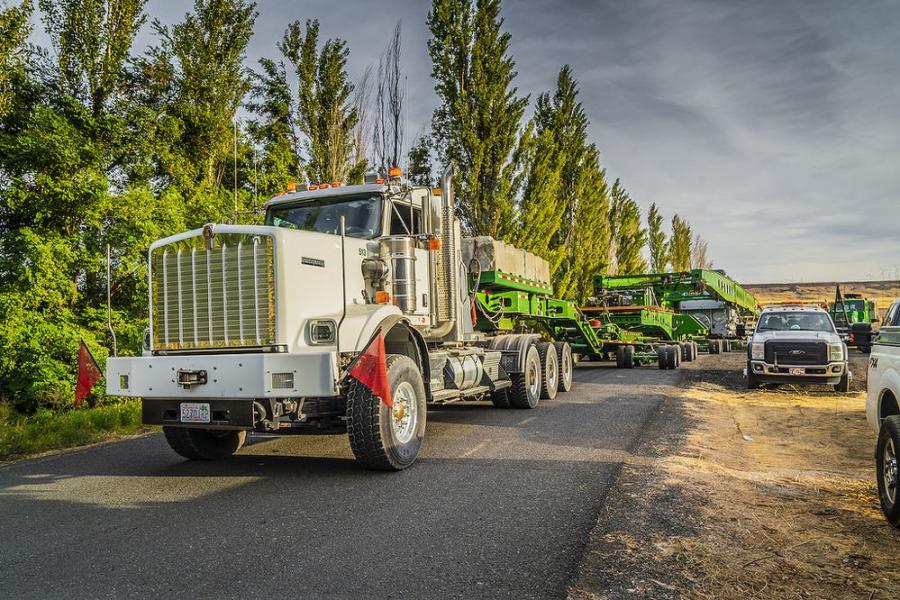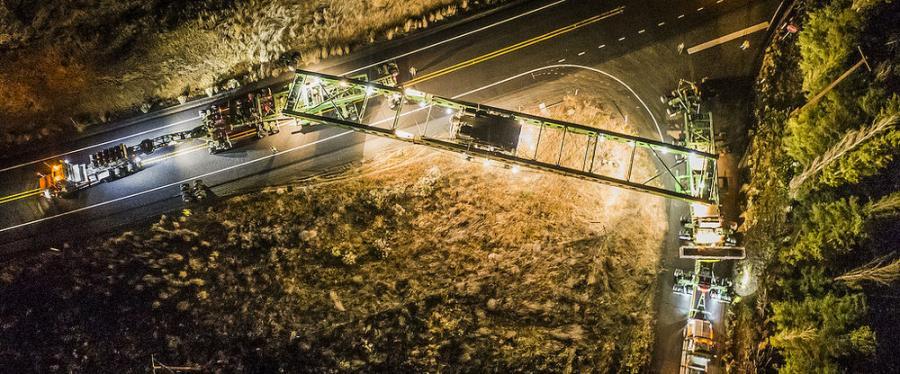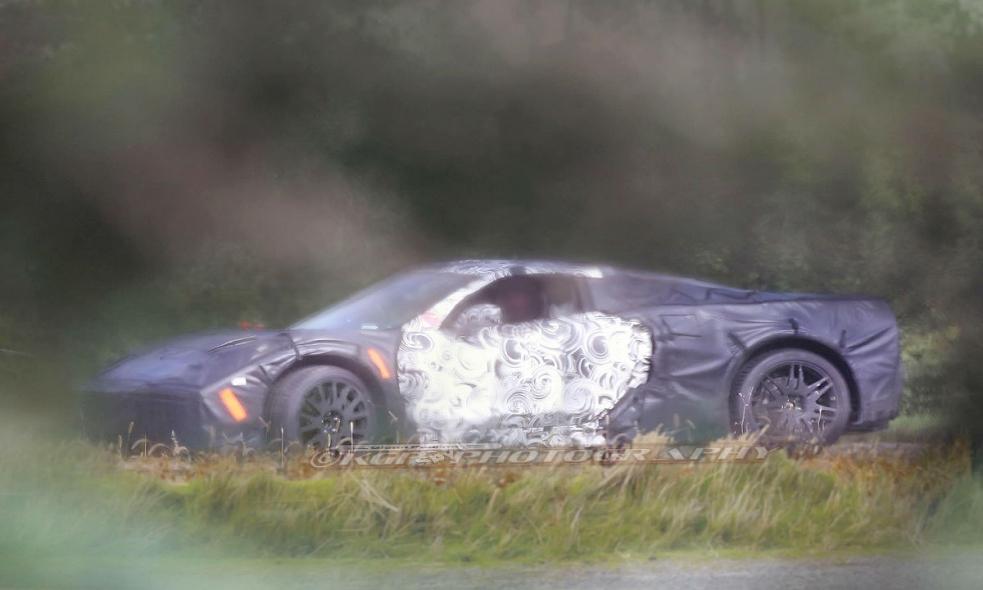
kscarbel2
Moderator-
Posts
18,905 -
Joined
-
Days Won
114
Content Type
Profiles
Forums
Gallery
Events
Blogs
BMT Wiki
Collections
Store
Everything posted by kscarbel2
-
Indianapolis Star / December 13, 2018 Two-year-old Evan Brenneman burst into his parents' bedroom around 3 a.m. Thursday. "Thursday," he exclaimed. "Garbage truck." Thursday is garbage day, which means the big orange truck he's enamored by is going to stop at their Plainfield home, said his mother, Natalie Brenneman. But this week, Evan got a surprise when the orange truck stopped by: a backpack full of Ray's Trash Service swag and a hug from his favorite trash man, James Bullock. Evan has been fascinated by anything with wheels since he was about 9 months old, Brenneman said, but his interest in the trash truck grew last spring and summer. "We can hear it coming down the road, so he would run to the window and watch it," she said. Eventually, they were waiting outside every Thursday to greet the truck from the porch. Then, Evan wanted to meet the trash men. "One day, James popped out and said, 'Hey do you want to come see the truck?'" Brenneman said. Their friendship has continued to blossom. Evan has Prader-Willi Syndrome, a rare genetic disorder that tricks the body into believing it is constantly hungry. Ray's Trash Service has twice sponsored the family's annual walk to raise awareness and funding for PWS research, Brenneman said. And when Evan, who turns 3 next week, recently celebrated his birthday, Bullock's family joined in the festivities. "It was so funny, because Evan was just thrilled that he was there. He was his favorite party guest," Brenneman said. However, there was one downside. "He was disappointed that James did not bring the garbage truck with him to the party." It's been special to watch her son make a new friend, Brenneman said. "Oh my gosh, my heart bursts every time," she said. "... I know he’s in the middle of his work day and probably wants to get it done quickly, but he stops and talks to Evan. He always gets down on his level, looks him in the eye, gives him a hug, offers him a high-five." "It’s just so great that he pauses to talk with us and to spend a little time with Evan.” Video - https://www.indystar.com/story/news/2018/12/13/rays-trash-service-driver-surprises-2-year-old-backpack-full-gifts/2304320002/
- 1 reply
-
- 3
-

-
The DAF (Paccar) engine, as composed in DAF trucks in Europe (Euro 6 emissions), is a high-performing, reliable and durable engine. I can promise you that no DAF operators in Europe would disagree with me. The US operators I know are generally satisfied. They all note that Paccar charges a premium for Cummins power.
-
FAW introduces Euro-6 emissions JH6 heavy trucks up to 580hp
kscarbel2 replied to kscarbel2's topic in Trucking News
No Ted, you're thinking of Volvo's "Tandem Axle Lift". The one truck is a 6x4, and the other a 6x2 with a tag axle. These are nice trucks. You name it, you can get it. Drum, disc or wedge brakes. Steel spring or air spring. Tag or pusher auxiliary axles. -
Iveco Trucks Australia Press Release / December 10, 2018 One of Australia’s leading concrete and construction materials company, Hanson, has taken delivery of the first of 82 ACCO 8x4 agitators, which will be deployed to sites across metropolitan Queensland, New South Wales, Victoria and Western Australia. The new trucks are part of a fleet rejuvenation program replacing older ACCO models along with several other brand trucks. Hanson’s National Procurement Manager, Neil McDermott, said the ACCO range is a proven performer in the industry and was selected because it provides several key performance benefits. “In terms of tare weight, what the ACCO offers is very attractive,” Neil said. “The lower the tare weight, the better it is from a fleet efficiency and business perspective.” All of the new trucks are fitted with 7.5 cubic metre bowls from Mixers Australia and ATT, and feature 340 hp engines, automatic transmission, front airbag suspension, rear rubber block suspension, and importantly for the application, Electronic Stability Control. Given the time-sensitive nature of concrete delivery, all vehicles are also equipped with Trimble tracking and dispatch software, which helps manage the product delivery cycle by automatically updating dispatchers on location and status of the vehicles in real-time. Neil said that aside from seeking efficiency, safety was another prime considering for Hanson and more broadly across the concrete industry. “It’s a high centre of gravity application and couple this with the fact that the mixing bowl is rotating – if not driven correctly, concrete trucks can be prone to instability,” he said. “A safety feature such as ESC isn’t a substitute for careful driving but it’s an important piece of technology that reduces the likelihood of a rollover.” The new ACCOs will remain in service for 13 to 14 years – the first eight years of their working life will be in a metropolitan environment, after which they’ll be relocated to regional and rural areas which are normally a little easier on the equipment thanks to less stop and start work and a reduced overall workload. Neil said it has been good for Hanson to re-establish a relationship with IVECO, after several years of purchasing competitor products. “We bought solely IVECO for many years before making a change to try some other products,” he said. “Hanson had been keen to use ACCOs again and to build on our earlier partnership. We are also pleased to be supporting Australian manufacturing and boosting local employment through this latest purchase.” As ACCOs are a familiar vehicle on the Hanson fleet, the company’s drivers have responded well to the latest model, according to Neil. “Our drivers comment favourably; with the front airbag suspension they’re a comfortable truck, are easy to get in and out of, and the cab over configuration provides excellent visibility and manoeuvrability on the work site,” he said. The first batch of the new ACCOs is already operating, with the remainder expected to be delivered within the first quarter of 2019. Depending on where they’re located, the trucks will be maintained by IVECO Dealerships, Hanson’s in-house technicians or mobile mechanical contractors. .
-
Isuzu Trucks Australia / December 4, 2018 The Isuzu NPS is the original light truck 4x4. With 2-pedal AMT the bar has been lifted and emergency services, mining and exploration applications are even better served by Australia's number one truck - Isuzu. .
-
Isuzu Trucks Australia / December 4, 2018 .
-
New Zealand Trucking / December 2018 New Zealand Trucking contributor John Heron was driving trucks in Darwin when tropical Cyclone Tracy struck on Christmas Eve 1974. He told Faye Lougher what it was like to be living directly in its path, and the role the cyclone played in shaping his life’s journey. John had lived in Australia since the late 1960s working as a jack-of-all-trades for Simon Transport of Toowoomba, based in Darwin. “It was wet season and Christmas, and the buffalo hunters can’t shoot because the plains are too wet,” John says. “I quit Simon’s in the wet season and I was helping the buffalo company shift things into town.” John says it had been blowing most of the day, but the full force really hit about 6pm. “We were watching The Untouchables on a black and white TV. The lounge we were in had big windows and out past that was the flight path for the airport. Just before the power went out, we could hear this noise and we looked at each other and said ‘shit’. A BOAC VC10 crossed just outside the window – we could see the people in the plane. The wheels were up and the pilot was giving it full noise and trying to get off the ground. He was so far off course it was not funny. This was just outside the window and I will never forget it.” Later that night John went to bed in his caravan, but after its roof caved in he thought it was time to get out and he went to check how everyone else was. “It was pretty scary, things were banging and crashing and you couldn’t see anything. I climbed the outside stairs to the front door of the house and got it open but couldn’t understand why it was still piddling down with rain. I shone my torch up into the blackness and found there was no roof.” John searched the house but initially couldn’t find anyone. “I went back downstairs and they were all hiding in the downstairs toilet and shower. Nine of us and a dog spent the night there, listening to the storm raging on, with timber and iron from houses crashing against the wall. The house was wrecked upstairs – it even pulled the wallpaper off the walls.” The eye of the cyclone went through during the night and in the morning when the wind dropped they ventured outside to assess the damage. “I had never seen such devastation; there was not a house left standing,” says John. “My nice new, custom-built caravan was now upside down on top of two cars that had been in the neighbour’s garage. Everywhere you looked there was rubbish and the roads were impassable.” Anyone who has been to Darwin, even recently, knows just how remote Australia’s northern-most city is when it comes to access by land. Even in today’s world the relief effort required following such an event would be a mammoth undertaking. John says the first week they were on their own as help was more than 2000 miles [3200kms] away, but being a truck driver in the outback with a bunch of buffalo hunters meant they could take care of themselves. “Water was the main problem, but a neighbour’s swimming pool was cleaned up for fresh water.” John says everyone pulled together to start with; they had no other choice. “Civil Defence was non-existent, everyone was looking after themselves. We didn’t know what was going on, we only realised something was happening when the army and navy started arriving.” A total of 66 people were killed and many more were injured, and 70% of the homes were destroyed. John says the biggest air evacuation in Australian history began, with more than 40,000 people evacuated from Darwin. “The RNZAF was there for about a fortnight, but they could only land in daylight. Communications were limited as the incoming planes and ground staff only had hand-held radios. When the planes were on final approach to Darwin Airport they would call up on the hand-held and get people who were clearing the airport to move so the planes could land. There were no other communications with the ground as all radar and radio was destroyed. There were civilian aircraft as well as military Starlifters, and the civilian airlines broke a record for carrying passengers.” There was also the largest concentration of Australian naval ships since the Second World War anchored in Darwin Harbour. John stayed and helped with the clean up, then was offered a truck to take a load of damaged copper solar panels and fittings, with three cars on top, to Adelaide, about 2200 miles [3540kms] south of Darwin. “The truck was a Diamond Reo 6x4 with a 250hp Cummins diesel and a 13-speed Roadranger gearbox, pulling two 38-foot [11.5m] trailers. It was hard yakka as the truck had suffered some damage in the cyclone, with a cracked windscreen, broken mirror, a whack in the passenger’s door and the batteries were cracked. The Cummins had a decompression lever so I put a wire on it so I could work it from inside the cab.” The US Army built the road from Darwin to just south of Alice Springs during the Second World War, and while it was bitumen, John says it was only 12 feet [3.6m] wide with big drop-offs. “Darwin to Katherine is just over 200 miles [320kms], but the road is slow and winding, up and down as it goes through tropical rain forests. After Katherine the road is a lot flatter and faster as you start to cross the great outback plains. The road was very busy as the Government had every road train it could get to shift emergency supplies to Darwin.” John says it took him two full days to get just north of Alice Springs and by then it was late at night so he camped in the truck on the side of the road. The following morning he headed into Alice for breakfast and to check the truck over before heading for the South Australian border. “It was not long before I hit the dirt road and had just over 700 miles [1126kms] of dirt to go. The corrugations in the dirt were bad with the extra traffic, and the two graders working the 700 miles couldn’t keep up. I had to keep the Diamond above 40mph [64kph] so it could ride across the top of the corrugations.” Another few hours sleep on the side of the road and then John was bound for Coober Pedy, where he says the only bit of bitumen was the main street. “I fuelled up and checked the truck and had a shower and a feed, but wonder why I bothered as half an hour down the road it was so hot, about 100°F-plus [37°C] and some of the dust came in the cab and stuck to my sweaty skin and turned to mud, and I was as dirty as I was before I showered.” Next stop was Pimba, and then Port Augusta. “I made good time so my first drop was the Holden panel van that was on top. They lifted the van with a spreader frame, and as they swung it off my truck, bugger me, it slipped in the frame and hit the deck from 15 feet [about 4.5m] nose first and it rolled onto its roof. It was a write-off as the chassis was bent. This panel van had gone through Cyclone Tracy without getting a mark on it, and I carried it for more than 2200 miles [3540kms] over one of the roughest roads in Australia without putting a mark on it, and they dropped it. If that wasn’t bad enough, it was COD and I had to collect the freight on the van.” After unloading the rest of his freight the following day, John made the slow return trip. He stayed on in Darwin for about a year and says the rebuild, like Christchurch, was slow. “I’d been home to New Zealand for a trip and when I got back to Darwin I started getting depressed. Basically I didn’t have a lot; I’d lost my caravan and everything in it.” John decided to move back to New Zealand and went straight back to truck driving. “RFL had an ad in the paper and I was one of 108 who applied for the job. I enjoyed the life, you were your own boss.” He started off in RFL’s Johnsonville yard doing local work, and then when a line haul driver left he applied for that job. The new role took him as far north as Auckland and as far south as Dunedin. “We were pretty lucky guys in those days, we did a lot of work for Watties. Anything that was under temperature control, such as frozen foods, meat and ice cream.” John stayed with RFL for 11 years before heading in an entirely different direction, buying a garden and pet centre in Paraparaumu with his partner, Pat. “It was the oldest garden centre on the coast. I had a little truck to do my own work and I also did casual work for others.” In his youth John had attended Flock House, an agricultural and farm training school in Bulls, so after leaving the garden centre he and Pat went farming. “At the time we were leasing 100 acres of motorway land while we decided what we were doing. We were there five years and then bought a farm out the back of Feilding. We initially had about 130 acres but grew it by taking on leases, and had about 600 at our peak.” After driving for so many years, John says farming was a challenge. “I don’t think I enjoyed it as much when I was younger, but I do now. I was the one who did all the building and work on fences and the digger and so on, and Pat looked after the genetics and the animals. We had to help each other at times.” The farm had the largest herd of purebred Texan Longhorns in New Zealand, but after the devastating Manawatu floods in 2004 John says they were virtually bankrupted. “I got a job with John Mills of Halcombe and I drove for him. The road was blocked so they had to come and pick me up and drop me off at night. Pat was working two jobs, and I had odd jobs driving bits and pieces.” John says while he enjoyed farming, for a long time he did miss driving for a living. “Not now – I’m 71 and have bad arthritis. I’m okay once I am in the seat but it’s the getting in and out. The arthritis came from an accident at RFL where I was run off the road. I was in an A-train and it did a somersault and I spent two and a half hours pinned by my knees.” Now semi-retired, John and his son Cameron are restoring a 1980 Kenworth W924 first owned by Colin Hunter of Hunter Brothers Rotorua. A nasty piece of work Christmas time is a special time, especially in Darwin, the capital of Australia’s Northern Territory. In Darwin it’s not only the festive time it is for most of us, but also a time of remembrance. Forty-four years ago this Christmas Eve Tropical Cyclone Tracy tore the city apart, destroying 70% of the houses, killing 66, and leaving 25,000 of the 47,000 inhabitants homeless, with nothing but the clothes they stood in. In the wake of her overnight rampage was AUS$837 million worth of damage (AUS$6.4 billion in today’s dollars). Tracy is the second-most compact Tropical Cyclone recorded, with gale force winds extending only 48km (30 miles) from her centre. But she lacked nothing when it came to punch, with winds in the 205km/h range sustained for up to a minute, and 175km/h winds lasting 10 minutes at times. .
-
- 1
-

-
Diesel News Australia / December 2018 Here we see a video about women changing trucking. If they are, it is a slow and painful process, working through the male domination which characterises our industry. This video first appeared on the SBS news show, The Feed. There may not be a significant amount of women working on the front line in trucking but there are changes a foot and these pioneering women represent a vanguard for many more to come. The trucking culture in Australia can be a daunting and unwelcoming place at times, but we are suffering a drastic driver shortage. We should be welcoming keen people wanting to get into our industry with open arms. We cannot afford to let things remain as they are today. More women in the industry will change the culture within fleets, but perhaps it’s about time there was a change. We are nearly twenty years into the 21st century and working with a mid-twentieth century mind-set. These women are being pioneers at the moment, but it will need a lot more females to follow them to make a realistic difference in the trucking industry culture. They all talk about having to deal with men in the workplace and the issues which can arise. We can only encourage more of their kind to get onboard and move the trucking industry forward. .
-
An American Truck and Also Clearly a Modern Truck Diesel News Australia / December 2018 Looking at the International ProStar as it re-enters the Australian truck market, this is clearly an American truck and also clearly a modern truck, but there are also enough cues to the traditional design of trucks, to keep a retro feel. The US, it seems, will never move away from the maxi-brake, no matter how old hat it becomes. A modern electronic switch can have just as many failsafe systems. However, this is what the conservative US truck driver likes, and also what a lot of conservative truckies in Australia also hang onto. Just look at the dominance of Kenworth in the heavy vehicle market to demonstrate how strong the sentiment is for a traditional style. Outwardly, the ProStar doesn’t have a look which suggests the traditional aspect of the truck. It is a swept back aerodynamic design which has been shaped to save fuel, and it clearly does. The LED lights make for a contemporary look to go with the clean lines. However, the vertical bars in the grille suggest past designs and the mirrors are hardly cutting edge, although they do have an aerodynamic shape. There is a vertical exhaust up the back of the cabin, but it is masked by the high sleeper and the aero kit on the trailing edge of the cabin. The interior is modern with the sweeping grey lines of the 21st century. The controls are from an older generation. The dials and switches are the standard US style, plus there’s the maxis, which will never change. The entertainment system has a large bright and modern style, most likely a retrofit in Australia. The instruments straight in front of the driver sit on a white background and are well arranged in a semi-circle but hardly contemporary. The LCD information screen is small and positioned low down with minimal information, the gear engaged, a trip meter, odometer and the outside temperature. Expecting more from a truck like the ProStar is to misunderstand where it comes from. This truck was designed by Navistar to compete directly with the all-conquering Freightliner Cascadia in the US market. It needed to be light cheap and fuel efficient to suit the big fleets of North America who chase low fuel consumption above anything else. In the US, the ProStar, now named the LT, is usually fitted with a 13 litre International engine and sold as a basic spec in large numbers. The Navistar team based in Dandenong in Victoria have taken the elements available to them in the International catalogue and come up with a truck which gets close to where the Aussie truck buyer wants to be. The driveline is familiar and capable of handling the job. The cabin is well-designed and a comfortable place to spend the night. The bunk in a B-double prime mover is rarely spacious, but International have done their best with the dimensions available. The design seems to be sensible and pragmatic, with items like the fold-away controller for the AMT. This truck is a good solid performer. It works well without fuss and is predictable. The ride is excellent with the Primaax air suspension making the best of rough roads like the uncompleted sections of the Pacific Highway. It has the North American look without the disadvantages like non-integrated sleeper or high levels of wind drag. This is not a hero truck, in the US the LoneStar does that job for International, and that model is not coming here any time soon. This is the hardworking prime mover which will ply the highways day and night and it has the driveline to do the job with minimal fuss. .
-
Seth Clevenger, Transport Topics / December 14, 2018 Battery-Powered CVs Could Represent Trucking's Future, But Many Questions — and Hurdles — Remain As electric vehicle technology becomes increasingly viable for commercial trucking, fleets and manufacturers are preparing to put the first generation of battery-electric trucks on the road. Although diesel likely will remain trucking’s primary fuel for decades to come, particularly for longhaul operations, the introduction of these electric-powered trucks will represent the industry’s first steps toward a future beyond the internal combustion engine. It also will mark perhaps the biggest change in trucking equipment since the motor vehicle replaced the horse and carriage. In the near-term, electric trucks will be limited to specific applications that are well-suited to the technology, and many questions about their capabilities will remain unanswered until these vehicles log significant miles in real-world trucking operations. But established industry leaders and new technology developers are taking on this electrification challenge. All of the major global truck manufacturers and many of their key suppliers are investing in electric vehicle technology as they prepare to compete in this emerging segment of the truck market. Some already have begun to introduce their first medium- and heavy-duty battery-electric models, with series production set to begin within the next few years. At the same time, startups and new players in the truck manufacturing business are looking to jump into the industry with electric-powered trucks of their own. Despite the crowded field of electric-truck developers, Daimler Trucks North America CEO Roger Nielsen said the focus at this stage should not be on rushing to market or securing preorders, but on gaining knowledge and building customers’ confidence in this technology. “I don’t want to get caught in some kind of race,” Nielsen said during a media roundtable in October. “What we’re trying to do is get the most experience that we can.” DTNA recently hosted executives from 30 of its fleet customers to drive its first battery-electric models and discuss potential use cases for those vehicles, as well as key factors such as charging infrastructure, government financial incentives, route planning and maintenance. Although electric vehicles represent a path to zero-emission trucking and huge fuel savings for fleets, applications will be limited at first, and several hurdles remain for adoption. Early models are designed primarily for shorthaul applications such as urban pickup and delivery, refuse trucks and port drayage. Opportunities for regional routes may be next, perhaps followed at some point by longhaul operations, but battery technology will need to continue to improve to reduce weight and extend vehicle range. The industry also will need to establish adequate charging infrastructure to support these vehicles. Battery-electric trucks represent an entirely different vehicle architecture, one that no longer relies on an internal combustion engine or diesel emission-control systems. In theory, this could reduce vehicle downtime and maintenance costs, but the technology still is largely untested in the rigors of the commercial trucking environment. At the same time, fleets will continue to evaluate other alternative fuels. Some developers are investing in hydrogen fuel-cell technology as a way to extend the range of electric trucks. Meanwhile, compressed natural gas remains the most widespread alternative to diesel available on the market today. And diesel, of course, isn’t going away any time soon. The maturity of diesel technology and the flexibility afforded by its existing fueling infrastructure mean that diesel likely will remain the dominant fuel for longhaul trucking for many years, especially for irregular routes. The First Generation of Electric Trucks Early iterations of medium- and heavy-duty electric vehicles already are beginning to enter the commercial trucking industry, with market availability and series production just a few years away. In June, DTNA unveiled battery-electric versions of its flagship heavy-duty Freightliner Cascadia and medium-duty M2 model. The truck maker said it plans to begin series production of the eCascadia and eM2 in 2021. To help pave the way for those product launches, DTNA has partnered with two of its fleet customers — Penske Truck Leasing and NFI Industries — to place 30 of those vehicles in the field for testing in real-world operations. Penske, which was set to receive 10 eCascadias and 10 eM2s, plans to put those vehicles in the hands of its lease customers, who will use them to deliver actual freight in local and regional applications. Bill Combs, director of fleet connectivity at Penske Truck Leasing, said the company expects “nonstop learning from the minute we start running them.” “There’s an expectation from our customers that we be ahead of a lot of these technologies,” he said. While it’s hard to tell how quickly electric trucks will become successful, the emergence of these vehicles is “probably one of the biggest changes in trucking in decades,” Combs added. Volvo Trucks, meanwhile, has announced that it will begin deploying all-electric trucks in California next year with plans to commercialize them in North America in 2020. Volvo will introduce its demonstration trucks through a partnership with California’s South Coast Air Quality Management District, which has received a preliminary award of $44.8 million for the project from the California Air Resources Board. Volvo Trucks President Claes Nilsson described the project as an important step toward the company’s vision of zero-emission trucking. “We are convinced that electrified truck transport will be a key driver of sustainable transports, and we’re proud to contribute the Volvo Group’s expertise to this innovative public-private partnership,” he said. Earlier this year, Volvo introduced two electric models for the European market that it intends to begin selling next year. Meanwhile, Mack Trucks plans to supply a fully electric Mack LR refuse truck to the New York City Department of Sanitation for testing in 2019. Paccar Inc. also is testing electric vehicle technologies through its operating companies, Kenworth Truck Co. and Peterbilt Motors Co. Kenworth has introduced electric-powered prototypes based on its T680 model. One of those trucks is equipped with hydrogen fuel-cell technology, while another uses a hybrid system that combines battery-electric propulsion with a CNG engine to extend the vehicle’s range. Peterbilt has displayed an all-electric version of its Model 579 built through a collaboration with TransPower, a supplier of zero-emission truck systems. Navistar Inc., which builds International brand trucks, has announced plans to introduce a medium-duty electric model as its first entry in this emerging segment. That vehicle, an electric Class 6 or 7 box truck for pickup and delivery applications, will be based on the International MV Series and have a range of 100 to 120 miles, said Darren Gosbee, vice president of powertrain and advanced engineering. Port drayage operations also have become “a significant area of interest” for Navistar’s electric truck development work, but that application will require a different battery pack and a range of 120 to 150 miles, Gosbee said. That truck would be based on the RH Series. Navistar plans to seed the market with some electric trucks by the end of 2019 and then roll out a larger number of vehicles to the marketplace by the end of 2020, Gosbee said. However, the truck maker has not focused its efforts on developing a heavy-duty electric tractor for longhaul applications. “The battery technology, we believe, has to go through another revolution of development to be able to get to a point where the energy density of the battery is there,” Gosbee said. “The coast-to-coast Class 8 sleeper, I think, is a long way from being electrified purely as a battery-electric vehicle.” The industry’s established manufacturers and suppliers are not alone in the pursuit of commercial vehicle electrification. New players in the truck-making business have showcased their own electric models and have helped spark a conversation about the potential for zero-emission trucking. Startup truck manufacturer Nikola Motor Co. was the first out of the gate with the unveiling of its Class 8 hydrogen-electric Nikola One sleeper model in late 2016. The company later introduced a day cab version, the Nikola Two, and a cabover for the European market, the Nikola Tre. Nikola has said it plans to launch field tests of its hydrogen-electric trucks in 2019. The electric-truck conversation gained additional energy in late 2017 when electric car maker Tesla Inc. trumpeted its entry into the commercial truck segment with the introduction of its battery-electric Tesla Semi. At the vehicle’s unveiling, co-founder and CEO Elon Musk said production was planned for 2019. Thor Trucks, another startup, also plans to begin manufacturing battery-electric Class 8 trucks starting next year. When electric trucks reach the market, their residual value will be an important consideration for fleets. Nielsen said DTNA’s fleet customers don’t expect to change their trade cycles when they begin adding battery-electric trucks to their fleets. Much like newer diesel models, customers should expect an improvement in energy efficiency year over year, and they will want to take advantage of those improvements rather than holding on to their existing vehicles, he said. But it also will be important that the trucks maintain their value on the used market. “Residual value and retention of the value through the life of the vehicle is at the top of the list,” Nielsen said. A New Vehicle Architecture In the early stages of the electric truck market, while sales volumes still are low, developers and suppliers will strike a balance between optimizing vehicle efficiency and utilizing existing components and designs that already have been developed, said Jason Roycht, vice president of Bosch’s commercial vehicle and off-road business unit in North America. “It’s not about optimal efficiency just yet,” he said. “It’s about a balance of how much do I need to spend in development to get it to market, how much is my cost basis for it, and can I make a total cost of ownership argument for my vehicle. So you’ll see a lot of different approaches.” For example, truck manufacturers generally are developing electric trucks that use the same chassis as their existing diesel models, rather than creating brand-new vehicles from the ground up. Engineering costs also are guiding the design of electric powertrains. The easiest approach is to simply add an electric motor to a traditional axle, Roycht said. “That’s not necessarily the most efficient approach to that problem, but it might be efficient enough for the application.” Over time, as developers focus more on maximizing efficiency, electric vehicle designs will shift toward electric motors on wheels, he said. Navistar’s Gosbee shared a similar perspective. Because the initial market and sales volumes for electric trucks will be limited, the easiest approach will be to take an existing model and modify it with an electric propulsion system, he said. “That is not truly optimized,” Gosbee said. “There is going to be a lot more opportunity for optimization as the volumes for e-mobility comes up. We will have a stronger business case to design and develop electric vehicles from the ground up.” Diesel-Electric Hybrids Unlike the passenger car market, most truck manufacturers generally have been moving directly to all-electric or hydrogen-electric vehicles rather than investing heavily in the intermediate step of diesel-electric hybrids. Earlier this year, Martin Daum, head of Daimler’s global truck and bus division, said he is “not a big fan” of hybrids. “To me, a hybrid gives you the worst of both worlds,” he said. “You still have to fulfill all the regulations on exhaust for any given diesel truck,” and then you add the challenges of introducing battery-electric technology. Paccar business unit DAF Trucks, however, showcased a diesel-electric hybrid alongside two fully electric models this fall at the IAA Commercial Vehicles show in Hanover, Germany. Others also see potential for hybrids in certain use cases. Johannes-Joerg Rueger, president of Bosch’s global commercial vehicles business, said he sees hybrids as a viable option, particularly for vehicles that enter the inner city. “For the last mile, being able to drive fully electric would certainly be a plus,” Rueger said in an interview at IAA. “It comes with a cost but would offer some additional options.” Developing a Charging Network For battery-electric vehicles to work in trucking, they will need adequate charging infrastructure. Early electric trucks may simply recharge at their home terminals, but the potential for these vehicles to expand into longer routes will depend on a broader network of charging stations. Daimler’s Daum described this infrastructure issue as a “chicken-and-egg problem.” Higher vehicle volumes would support infrastructure investment, and broad availability of charging stations would support vehicle sales, but the question is which will come first. “With electric, you still have to choose your routes very carefully,” Daum said. “Predictability is important.” Work currently is underway to develop charging standards for heavy-duty electric vehicles. A number of truck manufacturers, suppliers, energy companies and other players in the transportation industry have joined the Charging Interface Initiative, or CharIn, an association focused on establishing a worldwide standard for electric vehicle-charging infrastructure. Meanwhile, fueling providers already are thinking about how to serve the nascent electric truck market. Trillium CNG, best known for its more than 200 public and private CNG fueling stations, is moving toward a more diversified energy approach as its fleet customers begin to explore battery-electric and hydrogen fuel-cell vehicles. “Each fuel will have its own strengths and weaknesses, or trade-offs, and all of our customers have their own unique goals,” said Bill Cashmareck, managing director of Trillium, which was acquired by Love’s Travel Stops & Country Stores in 2016. Trillium is expanding into electrification through a partnership with EV Connect, an electric vehicle-charging firm, to establish light-duty charging sites at four Love’s locations in California. The goal, Cashmareck said, is to gain more experience and data to ultimately introduce more light-duty EV chargers to the motoring public, then help “bridge the gap for Class 8, when it comes.” Ultimately, plans for a heavy-duty charging network will be shaped by factors such as the range and battery capacity of the electric trucks that reach the market, he said. Another variable that fleets and charging providers will need to consider is the cost of electricity and the potential for demand charges from power companies that could put the whole operation into the red. Cashmareck suggested that large electric vehicle fleets could consider a different option: establishing a closed-loop charging system that doesn’t rely on the power grid. He said Trillium is developing a vehicle charging system that would produce on-site power from generators, turbines and potentially solar energy, thus allowing customers to take power generation into their own hands and reduce or even eliminate utility charges. That concept could work at a public truck stop or at a customer’s private lot, Cashmareck said. “We think we’re coming up with some innovative solutions for the EV market if fleets choose to go that way.” Emission Regulations and Incentives While trucking companies consider the potential business cases for adding electric trucks to their fleets, these vehicles also will help truck manufacturers meet tighter emission regulations in the coming decade. By introducing zero-emission electric trucks to their product lineups, OEMs will gain a leg up on the Phase 2 greenhouse-gas emission and fuel economy standards issued in 2016 by the U.S. Environmental Protection Agency and the National Highway Traffic Safety Administration. Under that rule, new medium- and heavy-duty vehicles and engines will need to comply with increasingly strict carbon dioxide emission limits in 2021, 2024 and 2027. By selling even small volumes of zero-emission electric trucks, OEMs can bring down their corporate fuel-economy average while banking credits for exceeding emission standards. “There’s a lot of incentive to overcomply,” said Glen Kedzie, energy and environmental counsel at American Trucking Associations. “When the milestones are more stringent in the future, if you are having a more difficult time hitting the targets, you can dip into your credit piggy bank.” He added, “They’re going up a mountain, and the mountain gets steeper the higher they go.” Navistar’s Gosbee also cited the compliance benefits of electric trucks as greenhouse gas standards tighten in the years ahead. By adding electric vehicles to their product lineups, OEMs will have more flexibility to sell other trucks with features that aren’t as greenhouse gas-friendly, he said. Beyond regulatory compliance, fleets also can take advantage of financial incentives to purchase electric trucks, particularly in California and at major seaports such as the ports of Los Angeles and Long Beach. Telematics in the Electric Fleet The introduction of electric trucks also will mark a new frontier for commercial vehicle telematics. New metrics such as battery state of charge and battery health will become important data sets for managers of electric truck fleets. Trucking telematics vendor Geotab has taken steps to prepare for that future through its recent acquisition of FleetCarma, a technology supplier for electric fleets. “We strongly believe that electric vehicles are the future,” said Scott Sutarik, Geotab’s associate vice president for commercial vehicle solutions. He described the FleetCarma acquisition as “an excellent opportunity for Geotab to really supercharge our efforts in the electric space.” FleetCarma has focused mostly on light-duty electric vehicles, but is preparing to serve the emerging medium- and heavy-duty electric truck market as well. Matt Stevens, FleetCarma’s CEO, said many elements of onboard technology for electric trucks will carry over from diesel models, such as electronic logging of drivers’ hours of service. But managing battery-charge levels and coordinating vehicle recharging will add a new layer of complexity for logistics planners. “There is an intense requirement to become an energy manager, which is completely new,” Stevens said. “It’s not how you ever had to think about liquid fuel management. The economics can truly be phenomenal if you do it right, but it is a very different skill set that requires very different tools.” Telematics will become an integral part of the “fueling” experience, he said, because the data will enable fleet managers to determine whether an electric truck can make another delivery based on its state of charge, and to monitor if and to what degree the battery’s capacity is degrading over time. FleetCarma also provides a managed charging service designed to guarantee every vehicle is charged by the start of its shift, while synchronizing charging times in a way that reduces peak demand. That “smart charging” approach can dramatically cut electricity costs, which Stevens said can make the difference between being competitive and being out of business. Telematics also can support fleets’ electric-vehicle purchase decisions through suitability assessments, Stevens added. By analyzing data from a company’s existing diesel fleet, FleetCarma can offer recommendations on the best ways to deploy electric trucks within those operations. A Menu of Fuel Choices Bosch’s Rueger predicted that commercial transportation in inner cities “will more or less become electric over time,” but the added weight of the batteries will make electric trucks impractical for longhaul. However, Bosch does see potential for hydrogen fuel cell-powered trucks in longhaul applications. “I believe it’s a very interesting option,” Rueger said. Bosch is supplying its eAxle electric drive system to Nikola, which is developing not only hydrogen-electric trucks but also a hydrogen fueling network to support the vehicles. Rueger said these hydrogen-electric trucks have the potential to capture part of the North American market, but other routes would need to be served by other technologies. “That’s why we believe that eventually fuel cells will be part of the equation, one of the solutions, but not the only one,” he said. Any future technology, including electric trucks and fuel cells, will need to prove itself and compete with what is in the market now. “Diesels have a long history and have proven maturity for longhaul,” Rueger said. “For the whole logistics segment, reliability is the most important factor. In our logistics chains today, we are so tight that it needs to work.” As fleets begin testing the first wave of electric trucks in their freight operations, the industry soon will learn more about the strengths and weaknesses of these vehicles. The results of those early deployments will provide a clearer picture of where and when this technology will be ready to transport its share of the world’s freight. .
-
360Che / December 14, 2018 The Qingdao division of FAW Truck Company recently introduced new Euro-6 emissions powertrains in its flagship JH6 heavy tractor. FAW Group Proprietary Engines The 13-litre CA6DM3 engine produced by FAW Group’s Wuxi Diesel subsidiary is available in Euro-6 spec rated at 500 and 560 horsepower. In addition, the 11-litre CA6DM2 is available in Euro-6 spec rated at 420, 440 and 460 horsepower. Vendor-Supplied Engines The 13-litre Weichai WP13 is available in Euro-6 spec rated at 510, 550 and 580 horsepower. Also, the 10-litre Weichai WP10 is available in Euro-6 spec rated at 375 and 400 horsepower. .
-
Renault Trucks Press Release / December 12, 2018 Renault Trucks presents the 2019 version of its Distribution range, Renault Trucks D and D Wide. The new versions of the vehicles feature improved aerodynamics and driver comfort, together with new Euro 6 Step D engines. The combination of this new equipment and engine improvements produce fuel savings of up to 7% compared with the previous generation. Euro 6 Step D motorisation The DTI 5, DTI 8 and DTI 11 engines already comply with the Euro 6 Step D regulation due to take effect on 1 September 2019. The Renault Trucks D and D Wide motorisations have been updated and now feature a new-generation particulate filter. To optimise fuel consumption, the DTI 5 and DTI 8 engines have been fitted with new engine software. The full range of auxiliaries has also been redesigned, with the Renault Trucks D and D Wide featuring a new oil cooling system and a low-flow water pump. Optimised aerodynamics The work recently performed by Renault Trucks on its experimental Urban Lab 2 vehicle has proven that optimisation of aerodynamics is one of the key levers for reducing both the fuel consumption and CO2 emissions of distribution vehicles, especially when operated in peri-urban environments. To improve airflow therefore, and thus significantly reduce fuel consumption, the aerodynamics of the Renault Trucks D and D Wide have been optimised. In the 2019 version, they have been fitted with new lateral deflectors, as well as a new adjustable roof-mounted deflector, which can be adapted to suit all types of bodies, thanks to its 12 setting positions. Safety and driving comfort For increased safety and driving comfort, the Renault Trucks D and D Wide are now fitted with new driver-assistance systems. The adaptive cruise control (ACC) automatically maintains a minimum distance behind the vehicle ahead for smoother driving in heavy traffic, whilst also reducing driver fatigue. The adjustable speed limiter (ASL) is also an integral feature. Controls for both systems are positioned within easy driver reach, thereby leading to safer and more efficient driving. The combination of these improvements and new equipment enable customers to achieve a 7% reduction in fuel consumption compared to the previous generation. Renault Trucks D and D Wide 2019 are available for order now. They are Biodiesel compatible (up to 100%) and are also available in a CNG version. .
-
Renault Trucks Press Release / December 12, 2018 Renault Trucks has launched the T 2019 on the market. Equipped with new Euro 6 Step D motorisation, the T version 2019 boasts a 3% reduction in fuel saving compared to the previous generation. It has also been fitted with new equipment, increasing on-board and driver comfort. Fuel consumption and CO2 emissions both down 3% The Renault Trucks T and T High version 2019 are already fitted with DTI 11 and DTI 13 Euro 6 Step D engines, compliant with the regulation due to take effect from 1 September 2019. They feature a new-generation post treatment system, made with new materials for increased durability. An Adblue quality sensor has also been added, whilst the seventh injector has been removed. The Renault Trucks T 2019 is equipped with a new-generation Optivision system. This predictive speed regulator, which uses road topography to optimise gear changes, now stores data directly in the vehicle. This adds to driver comfort, as the connection will no longer be lost, even in areas where the GPS provides no information, such as tunnels. Furthermore, route information is more accurate, enabling drivers to better plan their journeys. Last but not least, the adaptive Eco Cruise Control features new settings that use less fuel.The combination of these improvements and new equipment enable customers to achieve a 3% reduction in fuel consumption compared to the previous generation. Improved on-board and driver comfort In this 2019 version, the T range truck cabs feature new top-of-the-range finishes. Inside, the vehicle dashboard boasts a carbon finish, which also features inside the doors, together with black leather seats and a new harmonised grey headliner. Outside, the radiator grille and wing mirrors can now be customised, with a choice of two paint colours, glossy black or anodised orange. The vehicle ID plate features simplified, more easily visible wording, with the name of the vehicle, its power and motorisation. A further line is available for customer personalisation. The Renault Trucks T and T High version 2019 are now available to order. .
-
Volvo Trucks Press Release / December 12, 2018 Volvo Trucks’ I-See software uses cloud-based map data to analyse the upcoming topography. When a hill or gradient is detected, it adapts the truck’s gears, speed and engine brake in order to drive over the hill most efficiently. It has now been updated and improved, so it can help drivers save even more fuel. .
-
Volvo Group Announces Leadership Changes Transport Topics / December 13, 2018 Volvo Trucks announced on Dec. 12 that Roger Alm will take over leadership of its global operations on Jan. 1, 2019, replacing Claes Nilsson, who is retiring. In addition to becoming president of the truck group — which includes Volvo Trucks North America — Alm will become a member of Volvo Group’s executive board. Alm, who joined the company in 1989, currently serves as president for the truck maker’s European division. He has held several senior positions during his tenure, including leadership of the company’s operations in Latin America and Europe. Nilsson is closing out a 33-year career with Volvo during which he served in a variety of positions. He has been president of the truck group since 2016. The change comes just a few months after VTNA appointed a new leader; on Sept. 1, Peter Voorhoeve replaced Göran Nyberg as head of that division. On Dec. 11, Voorhoeve announced during a meeting with North American press that his company would launch an electric-powered version of its VNR regional-haul truck in 2020. Along with the Alm announcement, Volvo announced that Diana Niu is being promoted to executive vice president of group human resources. She also has been at Volvo in a variety of HR positions for almost 30 years, most recently as the senior vice president of human resources for Volvo Construction Equipment. In October, AB Volvo announced a 38% gain in net income on record quarterly revenue during the third quarter, results that were lifted by stronger truck orders and deliveries. For the period ending Sept. 30, Volvo — which reports in Swedish krona — earned the equivalent of $830 million, or 41 cents a share, on global revenue of $10.25 billion. The company saw its operating margin climb to 11.1% compared with 9.6% a year earlier. “Although this is the best third quarter ever for the group, it does not mean that we have reached our full potential. There is more to do to improve profitability and drive cash flow,” Volvo CEO Martin Lundstedt said in a statement. North American order intake in 3Q increased by 116% to 26,085 vehicles and deliveries increased by 39% to 13,565 vehicles — propelled by the region’s strong economy, truck capacity issues and high freight rates. Volvo Trucks saw its Class 8 North American retail sales market share, boosted by new models, climb to 10.5%, up from 8.6% a year earlier.
-
Kenworth Trucks Press Release / December 12, 2018 Roderick “Roddy” J. Valente founded R. J. Valente Gravel, Inc., in 1989 with one dump truck, a bulldozer, and dispatch located in his kitchen. Today, R. J. Valente is one of New York state’s largest material handlers. Serving the Albany, N.Y. region, the company is a family affair operated by Roddy, along with his daughter Daniella, son, Stephen A., and nephews, Anthony and Stephen J. With 52 trucks, the company is able to offer timely service and quality rock products from several of its pit and quarry facilities located in and around the Capital District. For many years, Valente ran another truck make. That all changed about four years ago when the company switched to Kenworth. “We didn’t have a Kenworth dealer in our area until Kenworth Northeast Group moved to Albany,” says Anthony Valente, who is in charge of sales and fleet management. “We dipped our toe in the water with Kenworth Northeast - Albany, got a good feeling, and bought a round of Kenworths. That was it. Our drivers absolutely love the T880s. Not only do the trucks look sharp going down the road, everything in it feels well built. It’s a heavily spec’d truck and we’re very happy with the T880s.” That first round of Kenworths included 10 T880s — five dumps and five tractors — all with PACCAR MX-13 engines. After working the trucks and seeing how they lived up to the Kenworth reputation and “after the sale” customer service, the company was sold on Kenworth. Since then, R.J. Valente has purchased a total of 38 new Kenworths based on driver appreciation, low cost of ownership, reduced downtime and superior service from Kenworth Northeast. “We’ve had great experience with PACCAR MX-13 engines,” says Valente. “At first, we purchased the extended warranty with them, but over the past two orders we stopped buying the extended warranty because we haven’t had any problems. We plan to buy 10 more Kenworths this year or early next year, so that will pretty much turn the fleet over to all Kenworths.” The company fleet is split between 26 dumps, and 26 tractors that haul dump trailers. Kenworth T880 dumps are spec’d with PACCAR MX-13 engines rated at 455-hp, while the T880 tractors are rated at 500-hp, all with Eaton UltraShift transmissions. As good as the Kenworth T880s are, says Valente, the service department is second to none. “I’ll be honest with you, the Kenworth trucks have been very good, but the service department is even better. I can’t say enough about them. New trucks are going to have an issue here and there. When I take a truck over to my Kenworth dealer, they troubleshoot it right away and get it back to us. It’s horrible when you take your truck to another dealer and it sits there for two days just to find out that a cooling sensor failed and it could’ve been fixed in 20 minutes. That kind of scenario doesn’t happen with Kenworth Northeast.” Valente says his maintenance costs have dropped by half since the company started running Kenworths. “Going forward, we’d like to trade out for 10 new Kenworth trucks every year,” he says. “We used to be a run-em-till-they-drop kind of company. When we started purchasing Kenworths, we decided we’d run them for four or five years, trade them in, and keep recycling them because Kenworths hold good value.” .
-
Heavy Duty Trucking (HDT) / December 12, 2018 Roger Alm (right) has been appointed as a new member of Volvo’s Group Executive Board and president of Volvo Trucks. He will replace Claes Nilsson (left), who is retiring. In addition, Diana Niu has been appointed as a member of the Group Executive Board and executive vice president, Group Human Resources, for Volvo Group. Both Alm and Niu take up their new positions effective Jan. 1, 2019. Alm currently holds the position as President for the European Division at Volvo Trucks. His career at Volvo Trucks began in 1989 and he has held many senior positions at the company, including as head of operations in Latin America and Europe. Niu has nearly 30 years of experience of HR activities in senior positions, primarily in Asia. Since 2014, she has been senior vice president, Human Resources at Volvo Construction Equipment. .
-
Construction Equipment Guide / November 8, 2018 Hillsboro, Oregon–based Omega Morgan specializes in heavy rigging and transportation, among other services. The company recently hauled one of the heaviest combination loads in Washington state history, weighing in at nearly one million lbs. Washington state issues between 600 to 700 "superload" permits a year – meaning the combined weight of a tractor and trailer exceeds 200,000 lbs. Omega Morgan transported a 460,000-lb. transformer, combined with a massive 360-ft. trailer with 48 axles weighing 484,000 lbs., which could be labeled as a new permit category. The 47-mi. haul through Washington's Klickitat County, started in Sundale, Wash., in late September, and ended at the Bonneville Power Administration (BPA) Rock Creek substation two days later. To accomplish the move, Omega Morgan used three heavy-haul Kenworth trucks. A Kenworth C500 was the lead (pull) truck, while two Kenworth T800 heavy haulers were the pushers. "Kenworth makes the best heavy-haul trucks, in my opinion," said Troy Tallent, vice president of operations at Omega Morgan. "They're incredibly strong, built to last, and engineered for extreme duty. There is no such thing as calling in a tow truck if something fails. We do all of our own service. It's vital to have equipment that you are confident in and will get the job done day-in-day-out. It's why all our heavy haul trucks are Kenworths." After Omega Morgan received a contract to haul transformers with BPA, the company built its 360-ft. trailer and bought the Kenworth C500, specifically for use with the trailer, from Papé Kenworth Northwest – Lakewood. For its C500, Omega Morgan selected a 550-horsepower engine, an Allison 4700 RDS seven-speed automatic transmission, and a four-speed air shift auxiliary transmission. The truck also has Sisu planetary tridem axles — rated at 105,000 lbs. with cross locks and a 7.01 ratio, and a 22,000-lb. front axle with 24,000-lb. front slipper springs. The C500 was built on a strong foundation – a triple rail steel frame providing a 200,000-lb. gross combination weight (GCW) chassis rating. "Rick Barry and the guys over at Papé Kenworth Northwest were, and continue to be, a big help to us," said Tallent. "They got us set up with the specifications we needed to get any job done." The BPA transformer project took months to plan, schedule and coordinate with state officials and private groups to ensure a logistically friendly route, without damaging roads. "For this transport, there were quite a few obstacles we had to plan for, not to mention two-lane roads that had to be closed," said Tallent. "For instance, we had to widen the gravel road from 16 ft. to 20, and reduce the grade by the rail head (where the transformer was lifted off the railcar and placed in the trailer-cradle) from 16 percent to 15 percent." To ensure Omega Morgan had enough traction to make it up the grade, the company added a fourth heavy hauler, loaded with concrete blocks that was tethered to the Kenworth C500. "We had plenty of horsepower with our three Kenworths, but needed added traction to pull all that weight up the 15 percent grade on gravel," said Tallent. Two Kenworths were positioned in the back, connected through a 10-ft. A-frame to generate power, while the C500 and other heavy-hauler were connected through a steel cable to help pull and direct the trailer. Once on the road, it was back to the three Kenworths. The move had its share of challenges. "When going up steep grades, our drivers are zeroed in on their truck's boost meters, talking back-and-forth on how much throttle they needed to give," said Tallent. "Going down hills, the drivers used their engines – along with the trailer brakes – to slow down." Bridges and tight turns also came into play. "We also had to go over three bridges, so we had to use hydraulic dollies to help spread the load," said Tallent. "On top of that, we had to make a few larger than 90 degree turns. For that, we slowed to walking speed and had our two tillers, who steered the trailer, work with our Kenworth drivers, so the trailers could turn in tandem with the trucks." Perhaps the biggest white-knuckle experience was navigating Hoctor road, a 20-ft. wide road that had to accommodate Omega's 18-ft. wide trailer for 14 mi. "With only a foot on either side, it was a little hair-raising, but we had great drivers that made it look easy. They were locked in," said Tallent. "After that, we arrived at our delivery location at the Rock Creek substation and began unloading." Once the mammoth move was completed, it was back to regular work for Tallent and his crew. "Driving is considered the easy part of the job for our drivers," he said. "Omega Morgan's drivers are a part of the crew. We deliver and then can offload ourselves. We're turnkey. Our drivers are involved in the whole operation. The majority are mechanics as well." Omega Morgan isn't done with big moves, albeit not as heavy. Using the company's 360-ft. trailer, more than 30 transformer moves have been completed for BPA, with more to come. "This operation got a lot of attention because of its enormous size," said Tallent. "What we do is about as heavy as heavy transporting gets. Kenworth trucks are built for these applications, which is why we only run Kenworth trucks in our heavy duty fleet. Nothing can deliver like a Kenworth." .
-
Chevrolet's 2020 mid-engine Corvette delayed Jake Lingeman, Autoweek / December 13, 2018 The midengine 2020 C8 Chevrolet Corvette will not be shown at the 2019 Detroit auto show next month, according to GM Authority, which cited anonymous sources at Chevrolet, because of electrical problems. The car's launch could be delayed by up to six months, the website said. GM Authority reports the C8’s electrical system can’t handle operating loads on the supercar, raising the prospect that next Corvette is a hybrid with a possible 48-volt primary electrical system. Engineers need to revamp the electrical system, which could require an electric motor on the front axle, similar to the Acura NSX. GM Authority says the midengine Corvette is still expected to be introduced in 2020. The Detroit News, citing a Chevrolet spokesperson, also reported the next-generation Corvette will not be introduced at the 2019 Detroit auto show. Car and Driver has reported that a hybrid variant with a twin-turbo V-8 engine is planned for the Corvette C8 and could generate 1,000 hp with all-wheel drive. The next-generation Corvette has been spotted undergoing tests at GM's Milford Proving Grounds in Michigan and at race tracks such as Wisconsin’s Elkhart Lake and Germany’s Nürburgring. The car was spotted undergoing road tests at night at Sebring International Raceway in Florida this month. .
-
Trump says GM shift to electric vehicles is 'not going to work' David Shepardson & Lisa Lambert, Reuters / December 13, 2018 WASHINGTON - President Donald Trump on Thursday said the decision of General Motors to shift much of its focus to electric vehicles will not succeed, and he asserted a new trade deal will make it harder for the company to move work to other countries. Last year, GM said it planned to launch 20 new electric vehicles by 2023 as it faces rising regulatory requirements for zero-emission vehicles in China and elsewhere. GM has come under enormous criticism in Washington after it announced plans to close four plants in the United States and cut up to 15,000 jobs in North America. Trump questioned GM CEO Mary Barra’s business strategy in an interview with Fox News. “They’ve changed the whole model of General Motors. They’ve gone to all-electric. All-electric is not going to work ... It’s wonderful to have it as a percentage of your cars, but going into this model that she’s doing I think is a mistake,” Trump said. Barra was on Capitol Hill for two days of meetings last week to discuss the company’s decision with angry lawmakers from states where plants are closing. “To tell me a couple weeks before Christmas that’s she going to close in Ohio and Michigan - not acceptable to me,” Trump said. Trump suggested that a new free trade deal with Mexico and Canada makes it “very uncomfortable” for GM to build cars outside the United States. Trump signed a new trade deal with Mexico and Canada on Nov. 30 to replace the North American Free Trade Agreement (NAFTA), but that deal has not been approved by the U.S. Congress.
-
Ford names new product development chief in Europe Nick Gibbs, Automotive News / December 13, 2018 Ford promoted global programs director Joerg Bayer to head of product development in Europe as part of upcoming changes designed to return the region to profitability. Bayer, 53, replaces Joe Bakaj, who retires after more than 30 years at the automaker. The reshuffle is part of Ford of Europe’s cost-saving plan called Sprint to 6 Reset and Redesign, which refers to Ford’s aim to reach a six percent EBIT profit margin in the region. The automaker has not given a timeframe for the plan. Beyer, a German national, has worked as an engineer within Ford since 1990. He has held a number of product development roles based in Germany, the UK and China, including as chief engineer for the Mondeo and Fiesta cars. Prior to moving to the new role of executive director for engineering at Ford of Europe, Beyer worked as executive director of Ford’s global programs. Bakaj joined Ford in the UK in 1985 and has occupied many senior roles within the company. Since 2013, he has been head of product development for Ford in Europe, a role that he had held previously. Bakaj has been heavily involved in the project to deliver a modular platform to be used for all Ford’s non-SUV cars. Prior to being head of product development, he was global chief of powertrains at the automaker. In 2011, he was awarded a Eurostar award from Automotive News Europe for his development work and in the same year, an Allstar award from Automotive News for his part in the development of the 3-cylinder EcoBoost engine. .
-
Ford set to end production at Blanquefort in France Claude Canellas, Reuters / December 13, 2018 BORDEAUX, France — Ford will end production at its Blanquefort plant in France by late August next year after rejecting a rescue deal for the factory, in a move which drew the ire of France's finance minister because of the risk of large-scale job losses. The French government had this autumn expressed optimism that the plant in southwest France and its 850 employees would be saved, but Ford told the plant's works council that it had rejected the bid made by transmission supplier Punch Powerglide. "Despite thorough and rigorous talks over the past nine months, and the best efforts of both sides, the plan put forward by the potential buyer presents significant risks," Ford said in a statement to the works council. "We do not believe that the prospective buyer's plans offer the level of security or protection, or limit the risk of possible future job losses, that we would like for the employees," added the company. The likely job losses will be a blow for President Emmanuel Macron, coming at a time of public rebellion over his reforms to liberalise the economy, including an easing of labour laws, and battles to haul down the country's stubbornly high unemployment. Finance Minister Bruno Le Maire in September had described Punch Powerglide as a "credible, solid buyer," and Le Maire reacted angrily to Ford's decision, and called on the U.S. company to change its mind. "I am revolted, I am sickened by this decision whose only justification is for Ford to get its shares to rise on the stock market," Le Maire told the French Senate. "I want to attack the cowardice of Ford. For the last three days I have been looking to talk to them, and they didn't even have the courage to talk to the minister of finance and economy over the phone," added Le Maire.
-
Scania Group Press Release / December 11, 2018 Out of 8,000 service technicians and parts experts from 70 countries, the team from New Zealand finished in first place and received the prize of EUR 50,000. In total, twelve service teams had qualified through regional and national finals for the Top Team World Final at Scania’s head office in Södertälje, Sweden. This year’s Scania Top Team is the tenth international event since the start in 1989. It has developed from a national training event into today’s global training programme with focus on practical and theoretical skills. The finalists in 2018’s competition were Argentina, Austria, Brazil, China, Finland, Italy, New Zealand, Poland, Switzerland, Taiwan, The Netherlands and United Arab Emirates, and New Zealand took the victory. Second place was Switzerland followed by Austria. Mathias Carlbaum is Executive Vice President, Commercial Operations at Scania. ”Our service teams play a significant role for Scania’s success. Their dedication, knowledge and efficiency contribute in the highest possible way to the creation of added value for our customers, making sure that our customers’ vehicles are quickly back on the road in a roadworthy, safe and efficient way.” In Sweden as well as globally there is a shortage of service technicians. Scania alone needs annually to recruit more than 1,000 service technicians throughout the world the coming years. .
-
- 1
-

-
Volvo Trucks to Introduce All-Electric Version of VNR Model
kscarbel2 replied to kscarbel2's topic in Trucking News
Volvo taps VNR regional-haul tractor for electric truck option in North America Jeff Crissey, Commercial Carrier Journal (CCJ) / December 11, 2018 Providing more clarity on its game plan toward an electric truck solution for the North American market, Volvo Trucks North America announced it is moving forward with an electric version of its 2017-launched Volvo VNR regional tractor originally developed for and produced in North America. Dubbed the VNR Electric, the tractor will be put into test operations next year with 23 units at fleet customers NFI and Dependable Highway Express as part of the Low Impact Green Heavy Transport Solution (LIGHTS) partnership consisting of the Volvo Group, California’s South Coast Air Quality Management District (SCAQMD) and other transportation and electrical charging infrastructure participants. The California Air Resources Board provided more than $44 million in funding for the project. “We appreciate that the California Air Resources Board (CARB) and the SCAQMD have recognized our leadership and trusted us to oversee this project that will ultimately result in the commercialization of fully-electric heavy-duty trucks,” said Peter Voorhoeve, president of Volvo Trucks North America. Voorhoeve said the VNR Electric will be commercially available beginning in 2020 after the completion of the LIGHTS project. But vehicle details are light other than a 113-inch BBC length and 50-degree wheel cut. Company executives said it will rely on fully electric powertrain technology from the Volvo FE and FL Electric cabovers introduced in Europe earlier this year and available for sale in 2019. The tractor also will feature a “driver-centric work environment” and stamped steel bumper to protect the lights and grille. In addition to its European FL and FE siblings, the VNR Electric’s development will undoubtedly build on experience gained from Volvo Buses’ electric vehicle development. The group currently has added more than 4,000 electric buses into operation since 2010. As the VNR Electric is still under development, no detailed specs were released other than a 113-inch BBC and 50-degree wheel cut.“We have decided in the group not to use cabover from Europe, but to electrify the VNR,” said Voorhoeve at a press roundtable at the House of Sweden in Washington, D.C. “From a technology point of view, we are using the electric drivetrain in the FE and FL. But we believe that for electric truck applications that the VNR is the electric truck for North America. We will showcase it in the LIGHTS project and then right after that we will commercialize it.” The $90.7 million LIGHTS project is Volvo’s way of differentiating itself from other truck OEMs and startups in the electric truck space with by developing an end-to-end solution that addresses the tractor as well as the charging infrastructure that will be required by fleets at terminals and customer locations. “Electric trucks bring many unknowns and our holistic focus through the LIGHTS project will help our fleet partners transition securely and smoothly based on their individual needs regarding driving cycles, load capacity, uptime, range and other parameters,” said Johan Agebrand, director of product marketing for Volvo Trucks North America. “Within the project we’ll look at everything from route analysis and battery optimization to servicing and financing.” The buzz around electric vehicles created by companies like Tesla, Thor and Chanje have helped accelerate the conversation around electromobility in North America, said Magnus Koeck, vice president of marketing and brand management for Volvo Trucks North America, but he added Volvo Trucks has a built-in advantage of scalability of a global company that builds in excess of 200,000 trucks per year. “Anyone can build one or two or 10 [electric trucks], but to have an entire global supply chain to build 200,000 trucks that are correctly spec’d for a particular customer in a particular market or region around the world, that shouldn’t be underestimated,” said Koeck.
BigMackTrucks.com
BigMackTrucks.com is a support forum for antique, classic and modern Mack Trucks! The forum is owned and maintained by Watt's Truck Center, Inc. an independent, full service Mack dealer. The forums are not affiliated with Mack Trucks, Inc.
Our Vendors and Advertisers
Thank you for your support!


